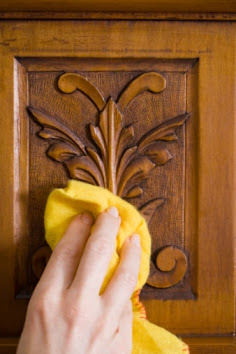How To Polish Wood Furniture | Naturally | At Home | With Beeswax
Polishing Wood Furniture Naturally At Home With Beeswax
When it comes to the interior design of your home, wood furniture is considered one of the best options that add warmth as well as character to any space; however, after using it for many years, it can start to lose its lustre, resulting in it looking dull. Fear not! With the right technique and approach, you can easily restore its natural beauty and shine without harmful chemicals. In this comprehensive guide, we'll explore the process of polishing wood furniture naturally, at home, with the power of beeswax.
Understanding the Benefits of Natural Polishing with Beeswax
Prior to beginning the polishing procedure,
first of all, it is essential to know why using beeswax is considered a
superior choice. In contrast to commercial polishes, which can include harsh chemicals and synthetic fragrances,
beeswax usually offers a natural alternative that not only protects and nourishes wood but also improves its beauty.
Beeswax creates a durable finish, which in turn, helps repel water and prevents
the wood from drying out, extending the life of your furnishings.
Step 1: Preparing Your Wood Furniture for Polishing
The first and foremost step when it comes to polishing your
wooden furniture is to prepare it properly. Start the preparation by dusting
the surface with the help of a soft cloth or a gentle brush to get rid of any
debris or dirt that could possibly scratch the wood during polishing. For
stubborn stains or grime, lightly dampen the cloth with water or a mild soap
solution and smoothly wipe the affected areas.
Step 2: Choosing the Right Beeswax Polish
All the beeswax polishes are not created equal, making it extremely
important to select the right type of beeswax polish for your furniture. Opt
for natural beeswax products free from synthetic additives as well as
artificial fragrances. Additionally, take into consideration the color of the
polish and how it will blend in with the wood furniture's current finish.
Choose clear beeswax polish for light-coloured woods and a tinted polish for
darker woods in order to enhance their natural tones.
Step 3: Applying Beeswax Polish to Your Wood Furniture
After you are done with cleaning & preparing your wooden
furniture & choosing the right type of beeswax polish, it's time to apply
the beeswax polish. With the help of a soft, lint-free cloth or a sponge, scoop
up a small amount of polish. Work the polish into the wood in a circular
motion, making sure to cover the entire wooden surface. Be sure to pay extra
attention to any scratches or imperfections, due to the fact that the beeswax
polish can help minimize their appearance.
Step 4: Buffing for a Brilliant Shine
As soon as you have applied the beeswax polish, permit it to
dry for a few minutes and then buff it to a brilliant shine. Use a clean, dry
cloth or a polishing brush in order to smoothly buff the surface of the wood in
long, even strokes. As you buff, the wood's inherent beauty will begin to show through,
leaving you with a glossy finish that's sure to impress.
Step 5: Maintaining Your Polished Wood Furniture
To keep your wood furniture looking its best, maintaining it
regularly is a must. Dusting the surface with the help of a soft cloth or
feather duster once a week can help keep dirt and debris away from building up
and dulling the finish. Additionally, make sure to reapply beeswax polish every
few months in order to maintain the protective layer and keep your furniture looking
like new.
Conclusion
Polishing wood furniture at home can be a fulfilling encounter,
particularly, when using natural methods like beeswax. Beeswax polish will enhance
the beauty of wood, and also provide long-lasting protection against damage
and wear. By following the steps mentioned above in this guide, you can be
absolutely certain that your wood furniture will remain a timeless centrepiece in
your home for years to come.





Comments
Post a Comment